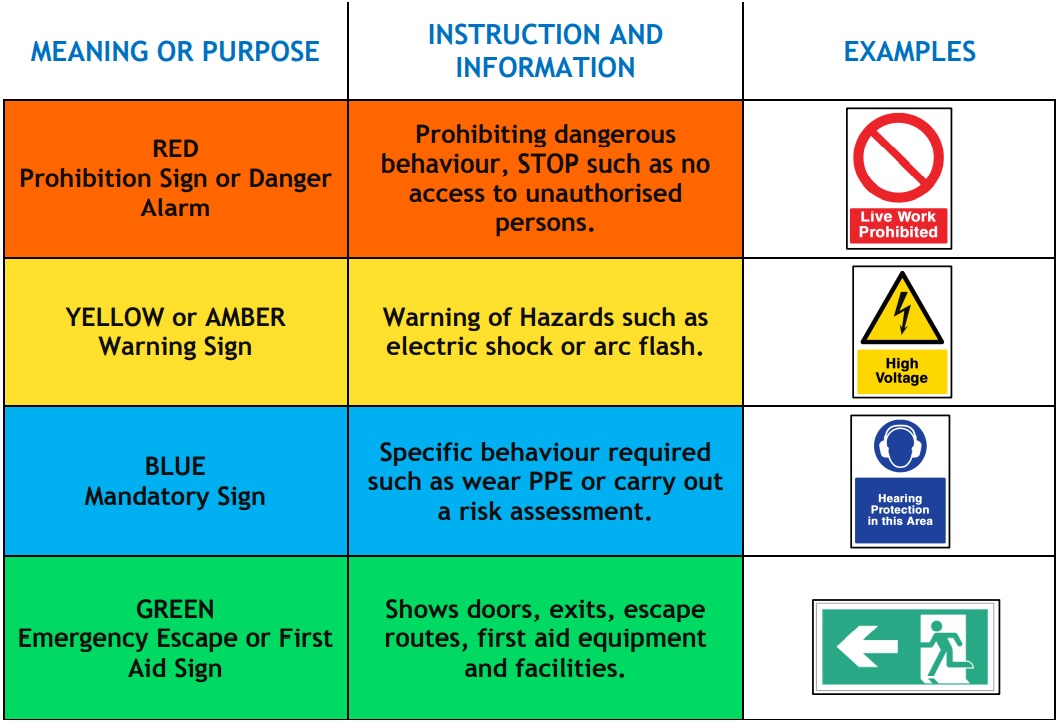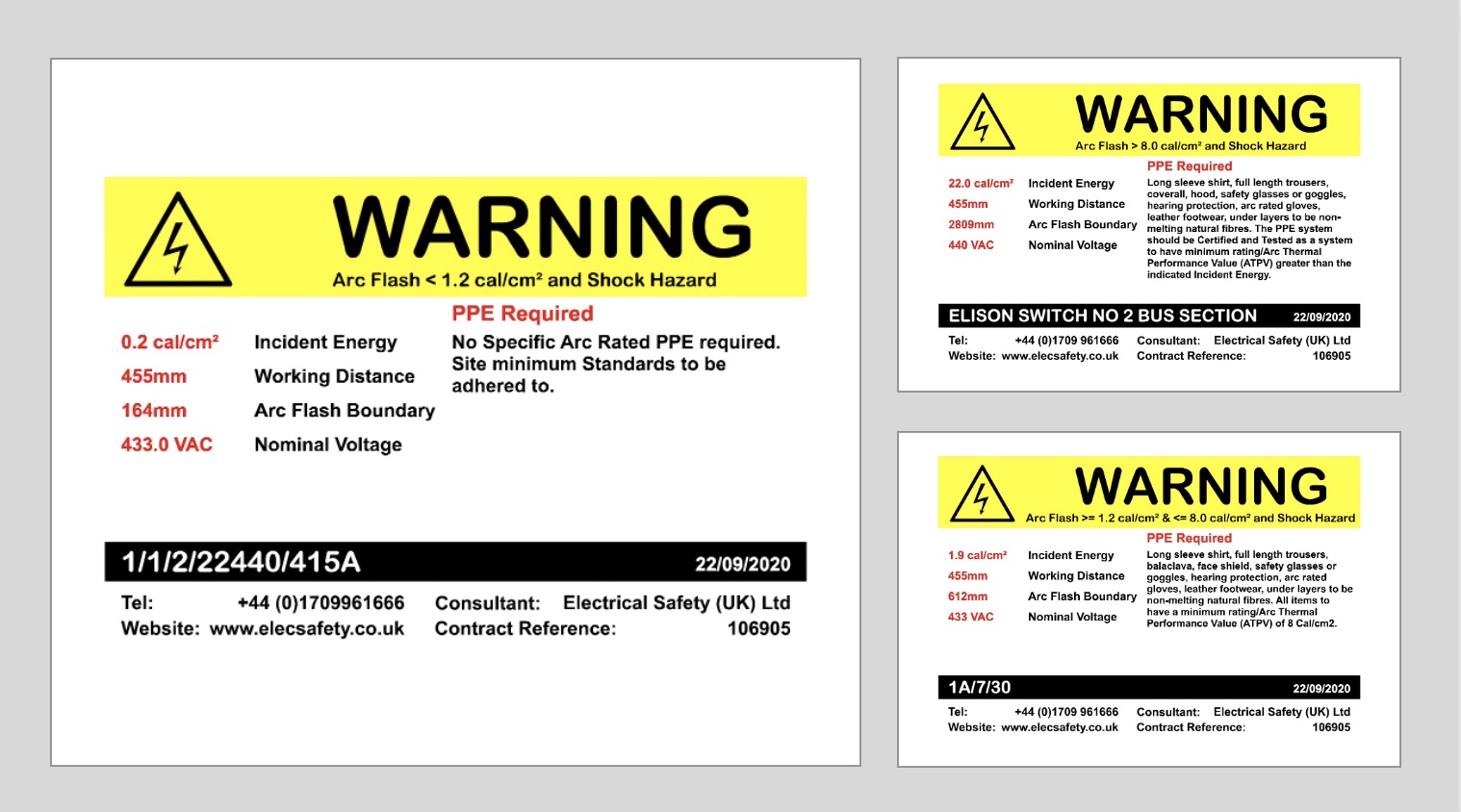6.4 Signs, Labelling and Field Marking of Equipment in Europe
Risk Assessments must be recorded and field marking of equipment may be required which is produced following survey and inspections. Safe systems of work, safety rules and procedures as discussed previously will be required and disseminated to all affected persons. It should be noted that arc flash labelling is not a mandatory requirement unless the company concerned is working to consensus standards such as the US NFPA 70E Standard for Electrical Safety in the Workplace. The European approach is one where labelling is less prescriptive but there is a general requirement that employers must provide safety signs where there is residual risk. The regulations require employers to ensure that safety signs are provided (or are in place) and maintained in circumstances where there is a significant risk to health and safety that has not been removed or controlled by other methods. The Health and Safety (Safety Signs and Signals) Regulations 1996 is the relevant legislation in the UK and is based upon the European Directive 92/58/EEC. The legislation lays down the minimum requirements for provision and use of safety signs at work the purpose of which is to encourage the standardisation of safety signs throughout the member states of the European Union such that safety signs, wherever they are seen, have the same meaning. Signs are only appropriate where use of a sign can further reduce the risk.
Warning signs must be standardized across Europe in a way which will minimize the potential problem that may arise from linguistic and cultural differences between workers. U.S style labels based on ANSI Z535 are not acceptable in Europe as the colours and symbols do not conform to the European legislation. When designing labels, the requirements of this legislation for warning and prohibition signs will need to be in accordance with this directive. Warning signs for instance must be yellow (or amber), they must be triangular, and the yellow must take up at least 50% of the sign. Information from arc flash studies can be included such as the incident energy level, PPE and various approach boundaries. The table in Figure 6.3 gives the meaning of each colour.

Figure 6.3 European Safety Signs and Symbology (excluding Fire Signs)
The following are typical arc flash labels that have been produced to comply with the colours and symbology used in Europe and are based upon the European Directive 92/58/EEC.

Figure 6.4 Images courtesy of Electrical Safety UK Ltd
6.5 Competence
A competent person can be described as a person who has the skill, knowledge, attitude, training, possess the experience to undertake the work and has the ability to recognise the extent of their own competence and leading them to take appropriate action. Regulation 16 of the UK Electricity at Work Regulations 1989 and the Republic of Ireland Guide to the Safety, Health and Welfare at Work (General Application) Regulations 2007 Part 3 Electricity, states that “No person shall be engaged in any work activity where technical knowledge or experience is necessary to prevent danger or, where appropriate, injury, unless he possesses such knowledge or experience, or is under such degree of supervision as may be appropriate having regard to the nature of the work”. The guidance on the above goes on to say “The scope of technical knowledge or experience may include:
- Adequate knowledge of electricity;
- Adequate experience of electrical work;
- Adequate understanding of the system to be worked on and practical experience of that class of system;
- Understanding of the hazards which may arise during the work and the precautions which need to be taken;
- Ability to recognise at all times whether it is safe for work to continue.”
The very important guidance clauses c), d), and e) are greatly enhanced by risk assessments that includes the prediction of the arc flash hazard. It is not enough to say that a person is competent because he or she is a time served electrician or engineer. Indeed, my experience is that enforcing authorities expect that duty holders can demonstrate that individuals are competent for the work that they are expected to do.